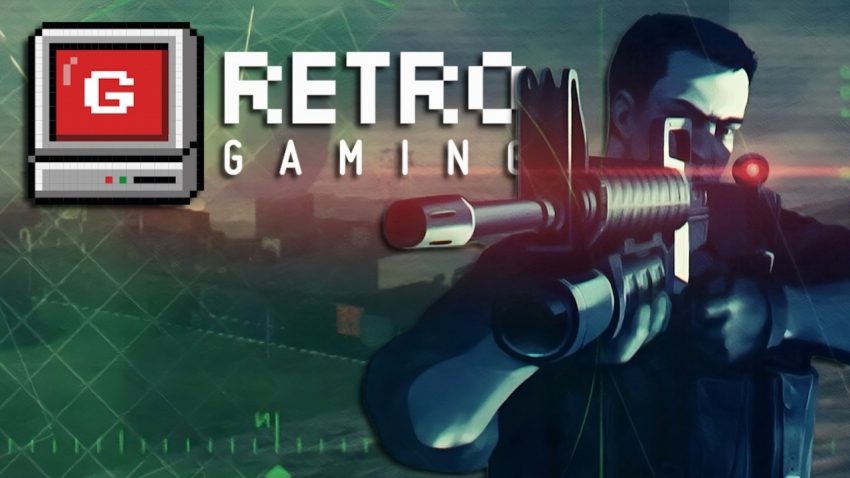A Unique Tactical Shooter with a Passionate Fanbase
The I.G.I. series was an ambitious attempt to stand out in the crowded world of tactical shooters, aiming to rival titles like Tom Clancy’s Rainbow Six and Ghost Recon. While it never quite matched the success of its bigger competitors, the franchise managed to carve out a loyal following. Among these fans is someone who feels a deep connection to the series, even if that bond sometimes feels a bit like Stockholm syndrome.
One of the most memorable entries in this series is Project I.G.I., which introduced players to David Jones, a former British special forces soldier turned mercenary working for the Institute of Geotactical Intelligence. The game’s narrative centers around a mission to infiltrate the former Soviet Union and recover stolen nuclear warheads from an American arsenal. It’s a plot that could easily fit into a James Bond or Sam Fisher story, but what sets Project I.G.I. apart is its unique approach to gameplay.
A Tactical Approach to Combat
Unlike many first-person shooters, Project I.G.I. emphasized strategy over sheer firepower. Before each mission, players could study a satellite map to plan their route, identify patrol patterns, and locate security cameras. Once the action began, however, players were left entirely on their own, without the support of AI allies that are common in games like Ghost Recon or Rainbow Six.
Mission objectives varied widely, ranging from blowing up missile launchers to defending allies or sneaking into enemy bases to gather intel. This variety kept the gameplay engaging and required players to think critically about each step they took.
High Difficulty and Realistic Mechanics
Project I.G.I. was known for its high difficulty level. Enemies were attentive and could detect the protagonist from a distance, often reacting quickly to gunshots. The main character wasn’t invincible either—taking direct hits was risky, making a “Rambo” style approach impractical. Instead, success depended on careful planning, stealth, and methodical elimination of threats.
Players had access to a wide range of weapons, including pistols, submachine guns, assault rifles, sniper rifles, shotguns, and even rocket launchers. However, ammunition was scarce for some weapons, adding another layer of challenge. Bullet physics were also realistic, allowing bullets to penetrate wood and bounce off metal surfaces. This meant that both players and enemies could shoot through walls, increasing the tension during combat.
The Challenge of the Save System
One of the most frustrating aspects of Project I.G.I. was its saving system. Players couldn’t save during missions, only after completing them. This meant that mistakes often resulted in having to repeat entire missions, which could be especially punishing for new players.
A Personal Struggle with Technology
For some players, technical issues added to the game’s difficulty. One player, for example, faced challenges due to outdated hardware. Their PC featured a GeForce 4 MX440 graphics card and a Creative Sound Blaster sound card, which caused compatibility problems. As a result, the game lacked a visible gunpoint, and weapon sounds didn’t play correctly.
In those early days of gaming, finding solutions was difficult. The player had to get creative, using a fingerprint on the screen as a makeshift aiming point. Despite the challenges, they managed to play the game, though looking back, they can hardly believe how determined they were.
A Predecessor to Modern Stealth Games
While Project I.G.I. may not have been as refined as later stealth titles like Splinter Cell, it shared some similarities. The game allowed players to sneak behind enemies, climb ladders, and use zip lines. Its open-structured maps were impressive for the time, and the occasional third-person perspective added a cinematic feel, similar to what would later appear in games like Deus Ex: Human Revolution.
Issues That Held the Game Back
Despite its strengths, Project I.G.I. had its flaws. The AI often behaved unpredictably, with enemies sometimes failing to react to the death of their colleagues or rushing at the player instead of calling for backup. Additionally, enemies would spawn unexpectedly, and gunfire could come from nowhere, leading to frustrating deaths.
Playing Project I.G.I. Today
As of now, Project I.G.I. is no longer available on major platforms like GOG.com or Steam. Players must purchase used physical copies for at least $20. The sequel, I.G.I. 2: Covert Strike, is more affordable, costing around $5. The series was also set to include a prequel called I.G.I. Origins, but the project was abandoned, leaving fans wondering what could have been.
